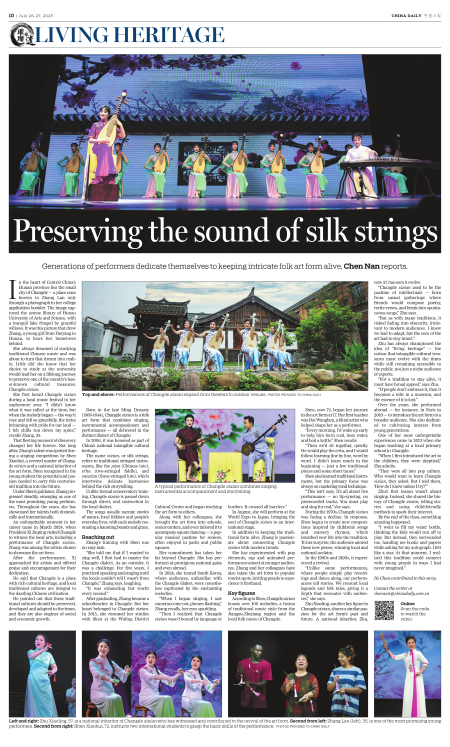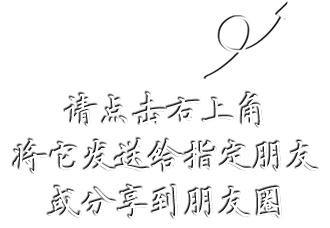
Online Scan the code to watch the video.
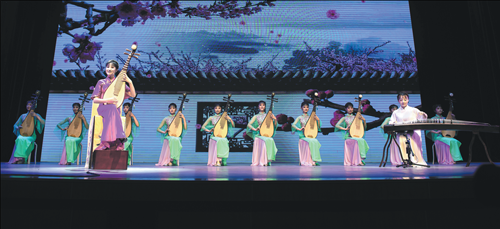
Performances of Changde sixian expand from theaters to outdoor venues.
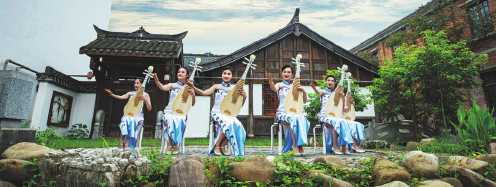
Performances of Changde sixian expand from theaters to outdoor venues.
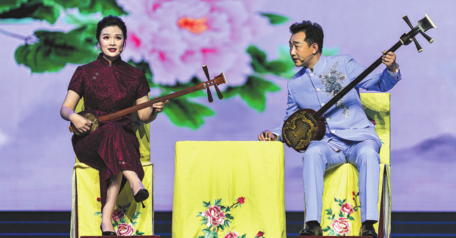
A typical performance of Changde sixian combines singing, instrumental accompaniment and storytelling.
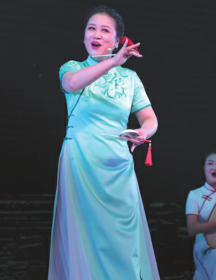
Zhu Xiaoling, 57, is a national inheritor of Changde sixian who has witnessed and contributed to the revival of the art form.
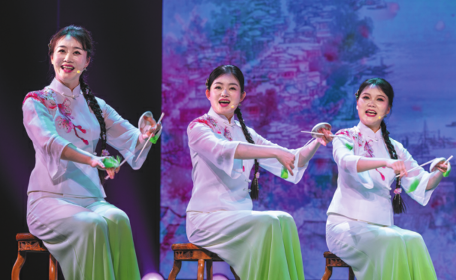
Zhang Lan (left), 35, is one of the most promising young performers.
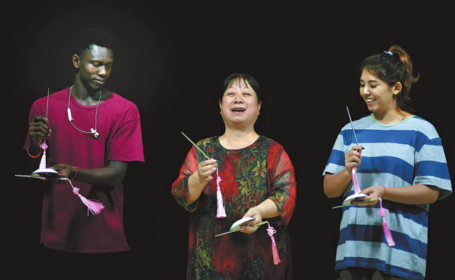
Shen Xiaohui, 72, instructs two international students to grasp the basic skills of the performance.
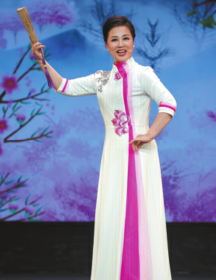
Zhu Xiaoling, 57, is a national inheritor of Changde sixian who has witnessed and contributed to the revival of the art form.
In the heart of Central China's Hunan province lies the small city of Changde — a place once known to Zhang Lan only through a photograph in her college application booklet. The image captured the serene library of Hunan University of Arts and Science, with a tranquil lake fringed by graceful willows. It was this picture that drew Zhang, a young girl from Yueyang in Hunan, to leave her hometown behind.
She always dreamed of studying traditional Chinese music and was about to turn that dream into reality. Little did she know that her choice to study at the university would lead her on a lifelong journey to preserve one of the country's lesser-known cultural treasures: Changde sixian.
She first heard Changde sixian during a local music festival in her sophomore year. "I didn't know what it was called at the time, but when the melody began — the way it rose and fell so gracefully, the lyrics brimming with pride for our land — I felt chills run down my spine," recalls Zhang, 35.
That fleeting moment of discovery changed her life forever. Not long after, Zhang's talent was spotted during a singing competition by Shen Xiaohui, a revered master of Changde sixian and a national inheritor of the art form. Shen recognized in the young student the potential and passion needed to carry this centuries-old tradition into the future.
Under Shen's guidance, Zhang progressed steadily, emerging as one of the most promising young performers. Throughout the years, she has showcased her talents both domestically and internationally.
An unforgettable moment in her career came in March 2024, when President Xi Jinping visited Changde to witness the local arts, including a performance of Changde sixian. Zhang was among the artists chosen to showcase the art form.
After the performance, Xi approached the artists and offered praise and encouragement for their dedication.
He said that Changde is a place with rich cultural heritage, and local traditional cultures are integral to the dazzling Chinese civilization.
He pointed out that these traditional cultures should be preserved, developed and adapted to the times, and they are also engines of social and economic growth.
Born in the late Ming Dynasty (1368-1644), Changde sixian is a folk art form that combines singing, instrumental accompaniment and performance — all delivered in the distinct dialect of Changde.
In 2006, it was honored as part of China's national intangible cultural heritage.
The name sixian, or silk strings, refers to traditional stringed instruments, like the pipa (Chinese lute), erhu (two-stringed fiddle), and sanxian (three-stringed lute), which intertwine delicate harmonies behind the rich storytelling.
Unlike formal conservatory training, Changde sixian is passed down through direct, oral instruction in the local dialect.
The songs usually narrate stories of nature, local folklore and people's everyday lives, with each melody resonating a haunting beauty and grace.
Reaching out
Zhang's training with Shen was no easy task.
"She told me that if I wanted to sing well, I first had to master the Changde dialect. As an outsider, it was a challenge. For five years, I practiced speaking and singing until the locals couldn't tell I wasn't from Changde," Zhang says, laughing.
"It was exhausting but worth every second."
After graduating, Zhang became a schoolteacher in Changde. But her heart belonged to Changde sixian. In 2015, she resumed her studies with Shen at the Wuling District Cultural Center and began teaching the art form to others.
Along with her colleagues, she brought the art form into schools, senior centers, and even tailored it to accompany square dancing — a popular musical pastime for seniors, often enjoyed in parks and public squares.
Her commitment has taken her far beyond Changde. She has performed at prestigious national galas and even abroad.
In 2024, she toured South Korea, where audiences, unfamiliar with the Changde dialect, were nonetheless captivated by the enchanting melodies.
"When I began singing, I saw cameras come out, phones flashing," Zhang recalls, her eyes sparkling.
"Then I realized that Changde sixian wasn't bound by language or borders. It crossed all barriers."
In August, she will perform at the World Expo in Japan, bringing the soul of Changde sixian to an international stage.
In addition to keeping the traditional form alive, Zhang is passionate about connecting Changde sixian with modern trends.
She has experimented with pop elements, rap and animated performances aimed at younger audiences. Zhang and her colleagues have also taken the art form to popular tourist spots, inviting people to experience it firsthand.
Key figures
According to Shen, Changde sixian boasts over 100 melodies, a fusion of traditional music style from the Jiangsu-Zhejiang region and the local folk music of Changde.
Shen, now 72, began her journey in the art form at 17. Her first teacher was Dai Wangben, a blind artist who helped shape her as a performer.
"Every morning, I'd wake up early to help him burn coal, heat water, and boil a kettle," Shen recalls.
"Then we'd sit together, quietly. He would play the erhu, and I would follow, learning line by line, word by word. I didn't learn much in the beginning — just a few traditional pieces and some short tunes."
Shen also learned traditional instruments, but the primary focus was always on mastering vocal technique.
"This isn't easy. It's all about live performance — no lip-syncing, no prerecorded tracks. You must play and sing for real," she says.
During the 1970s, Changde sixian was facing a decline. In response, Shen began to create new compositions inspired by children's songs and nursery rhymes, which breathed new life into the tradition. To her surprise, the audience adored these new pieces, winning local and national acclaim.
In the 1980s and 1990s, it experienced a revival.
"Unlike some performances, where people simply play recordings and dance along, our performances tell stories. We recount local legends and folk tales, giving it a depth that resonates with audiences," she says.
Zhu Xiaoling, another key figure in Changde sixian, shares a similar passion for the art form's past and future. A national inheritor, Zhu, now 57, has seen it evolve.
"Changde sixian used to be the pastime of intellectuals — born from casual gatherings where friends would compose poetry, recite verses, and break into spontaneous songs," Zhu says.
"But as with many traditions, it risked fading into obscurity, irrelevant to modern audiences. I knew we had to adapt, but the core of the art had to stay intact."
Zhu has always championed the idea of "living heritage" — the notion that intangible cultural treasures must evolve with the times while still remaining accessible to the public, not just a niche audience of experts.
"For a tradition to stay alive, it must have broad appeal," says Zhu.
"If people don't embrace it, then it becomes a relic in a museum, and the essence of it is lost."
Over the years, she performed abroad — for instance, in Paris in 2010 — to introduce the art form to a broader audience. She also dedicated to cultivating interest from young generations.
One of her most unforgettable experiences came in 2013 when she began teaching at a local primary school in Changde.
"When I first introduced the art to the children, they were skeptical," Zhu admits.
"They were all into pop culture. Who would want to learn Changde sixian, they asked. But I told them, 'How do I know unless I try?'"
Zhu's first lesson wasn't about singing. Instead, she shared the history of Changde sixian, telling stories and using child-friendly methods to spark their interest.
By the end of the class, something amazing happened.
"I went to fill my water bottle, thinking the kids would run off to play. But instead, they surrounded me, handing me books and papers while asking for my autograph. I felt like a star. At that moment, I realized this tradition could connect with young people in ways I had never imagined."
Contact the writer at chennan@chinadaily.com.cn
